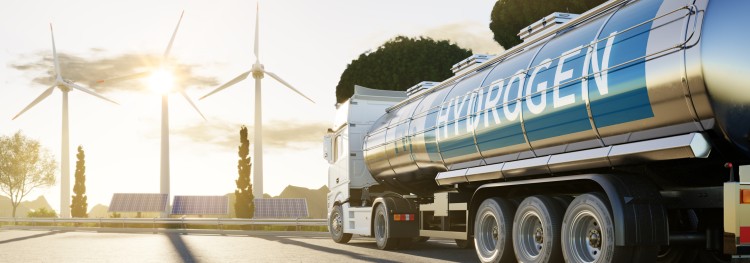
Werner’s blog: The commercialization potential of turquoise hydrogen

As global energy demand begins to pivot towards more efficient and sustainable energy sources, the question remains: what will become the prevailing energy solutions in the coming years and decades? In an excerpt from his latest blog post, Associate Professor Werner Antweiler discusses the novel technology of turquoise hydrogen, its cost and environmental advantages, and where it may fit into our local and global energy future.
Hydrogen (H2) is considered an important energy carrier of the near future because it complements the increasing electrification of many sectors of our economy. Importantly, hydrogen can be stored for when it is needed, and it can be transported and traded globally. Converting solar power or wind power into hydrogen will allow our electric grids to rely more on such intermittent sources. Hydrogen can also help decarbonize applications that are otherwise difficult to move away from fossil fuels, such as aviation and making steel. In addition to generating electricity from hydrogen through the use of fuel cells, hydrogen can be combusted directly in turbines and can be used in a number of industrial applications. The main benefit of hydrogen is the ability to store and transport it. Hydrogen can be shipped through dedicated pipelines, it can be liquefied, and it can also be converted into ammonia (which is easier to liquefy). Hydrogen is also an important part of Canada's energy policy. The Government of Canada has an explicit hydrogen strategy to develop hydrogen supply, and BC's provincial government has a local B.C. hydrogen strategy.
Hydrogen production is colour-coded. Currently, about 95 per cent of hydrogen is produced through steam-methane reformation (SMR) that generates carbon dioxide. This process is called grey hydrogen. Hydrogen can also be produced from coal through gasification as a precursor step; that is called brown (or black) hydrogen. If carbon dioxide emissions from these processes are captured and stored (CCS), then the resulting hydrogen is considered blue hydrogen. Green hydrogen is made from renewable energy sources through electrolysis. Green hydrogen is currently still expensive to produce, but production costs are expected to come down significantly through innovation both into electrolyzers and into renewable power production. And there is also pink hydrogen, when electrolyzers are powered by nuclear power instead of renewable energy sources. Which of the clean hydrogen production methods succeeds commercially will depend on innovation, carbon pricing, and developing economies of scale.
Between blue and green hydrogen lies turquoise hydrogen. This is a novel technology where methane (CH4) is converted into solid carbon black (C) and gaseous hydrogen (H2) through an endothermic reaction: methane pyrolysis. Many firms around the globe are working on commercializing this idea because it is economically and environmentally attractive. Economically, methane pyrolysis could become cheaper than blue hydrogen because the latter still generates some emissions that are subject to a carbon price. Environmentally, methane pyrolysis generates a useful by-product (carbon black) instead of a costly waste-product (carbon dioxide).
Rapid innovation into commercial-scale turquoise hydrogen production appears very promising and will have a commercial edge over green hydrogen for some time.
In Burnaby, start-up company Ekona Power Inc. is pioneering turquoise hydrogen production. In early 2022, Ekona received an infusion of $79 million of venture capital from Baker Hughes with participation from several other energy and investment firms. Ekona uses a technology called pulsed methane pyrolysis (PMP). The process produces hydrogen, solid carbon, unreacted methane, and a small amount of carbon dioxide, as well as combustion flue gases.
In Port Moody, Fortis BC and Suncor are partnering with Australian technology firm Hazer Group Ltd. on building a turquoise hydrogen plant with a different type of chemistry that involves a catalyst, starting with construction of a prototype facility in 2023. The new plant is expected to produce 2,500 tonnes of hydrogen per year along with 9,000 tonnes of synthetic graphite as a by-product.
Turquoise hydrogen gives countries with large natural gas reserves a new market, superior environmentally to blue hydrogen. Of course, there remain important environmental concerns, primarily about upstream emissions from methane production and through methane leakage. For turquoise hydrogen to have an environmentally sustainable future, these upstream emissions need to be tackled effectively. Emission intensities vary greatly across production sites in Canada. Sourcing natural gas from low-leakage sites is therefore crucial for maintaining the green credentials of turquoise hydrogen plants.
Yet, turquoise hydrogen offers a bright future for British Columbia’s natural gas industry. Unlike oil and coal, natural gas has the potential of remaining a valuable natural resource that is compatible with climate action goals if methane cracking can be commercialized successfully.